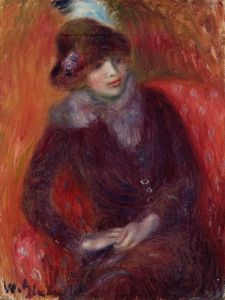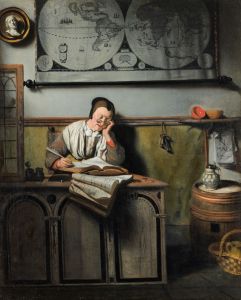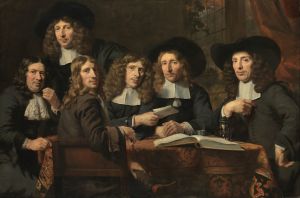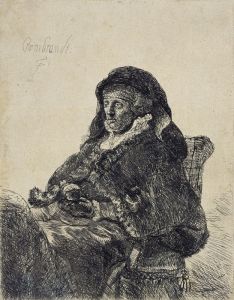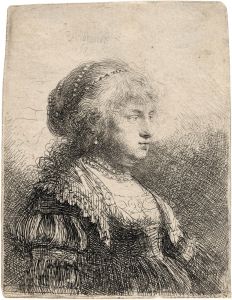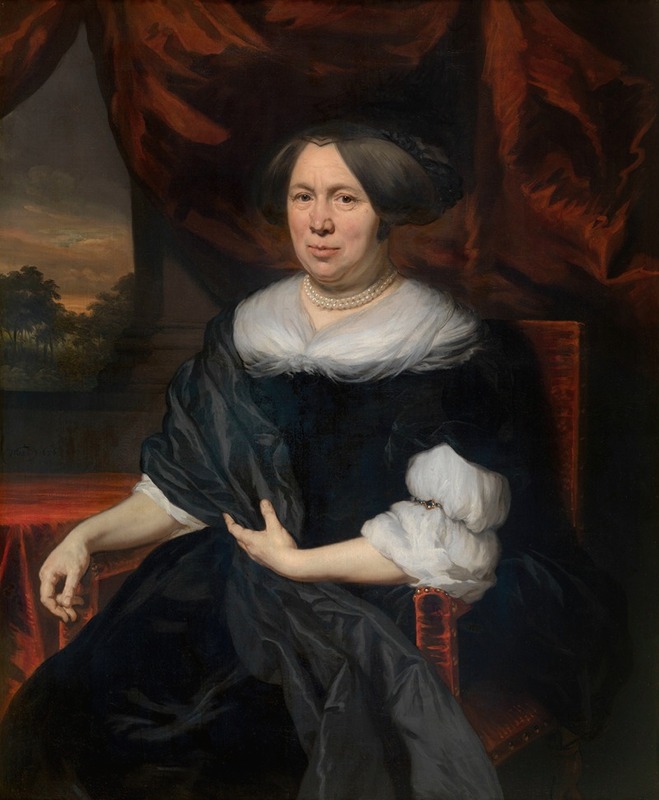
Portrait of a Woman
A hand-painted replica of Nicolaes Maes’s masterpiece Portrait of a Woman, meticulously crafted by professional artists to capture the true essence of the original. Each piece is created with museum-quality canvas and rare mineral pigments, carefully painted by experienced artists with delicate brushstrokes and rich, layered colors to perfectly recreate the texture of the original artwork. Unlike machine-printed reproductions, this hand-painted version brings the painting to life, infused with the artist’s emotions and skill in every stroke. Whether for personal collection or home decoration, it instantly elevates the artistic atmosphere of any space.
Nicolaes Maes, a prominent Dutch Golden Age painter, is known for his portraits and genre scenes. One of his works, Portrait of a Woman, exemplifies his skill in capturing the individuality and character of his sitters. While specific details about this particular painting, such as its exact date of creation or the identity of the sitter, are not definitively documented, it is consistent with Maes's mature style, which he developed during the latter half of his career.
Maes was born in Dordrecht in 1634 and trained under Rembrandt in Amsterdam. His early works were heavily influenced by his teacher, particularly in their use of dramatic lighting and narrative themes. However, by the 1660s, Maes shifted his focus to portraiture, catering to the tastes of wealthy patrons in Amsterdam and other cities. His portraits are characterized by their refined elegance, attention to detail, and the use of rich, warm colors.
In Portrait of a Woman, Maes demonstrates his ability to depict textures and fabrics with remarkable precision. The sitter is portrayed with a calm and composed demeanor, dressed in attire that reflects her social status. The background is typically understated, directing attention to the subject. This approach was common in Dutch portraiture of the time, emphasizing the individuality and dignity of the sitter.
Maes's portraits were highly sought after during his lifetime, and his work contributed to the flourishing of portraiture in the Dutch Republic. His ability to combine technical skill with a sensitivity to his subjects' personalities secured his reputation as one of the leading portrait painters of his era.
Today, Portrait of a Woman is housed in a museum or private collection, though its specific location may vary depending on exhibitions or acquisitions. As with many works from this period, the painting provides valuable insight into the fashion, culture, and artistic practices of 17th-century Holland.
This painting is a testament to Nicolaes Maes's legacy as a master portraitist, showcasing his transition from Rembrandt-inspired genre scenes to the sophisticated and polished style that defined his later career.







